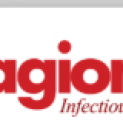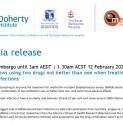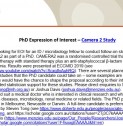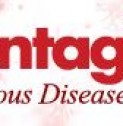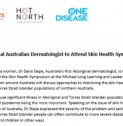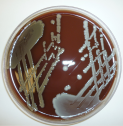Staphylococcus aureus (golden staph) is a major cause of community and hospital acquired infections. These infections range from uncomplicated skin and soft tissue infections (including widespread skin sores in remote Indigenous communities) to severe invasive bloodstream infections. Golden staph also causes post-surgical infections (e.g., infections following hip and knee joint replacement surgery).
Staphylococcus aureus is the most commonly isolated bacterium at the Royal Darwin Hospital.
Our research focus:
- To apply cutting-edge bacterial genomic technologies to Staphylococcus aureus to understand the transmission and population structure of the most prevalent types in Northern Australia
-
To improve treatments for severe S. aureus infections:
- We are leading a multicentre randomised controlled trial on alternative treatments for MRSA (resistant golden staph) bloodstream infections. The mortality rate from MRSA infections is 20-30%. The antibiotic vancomycin is currently used, but has a number of limitations
- We are using additional antibiotics to treat patients with severe staphylococcal disease caused by Panton-Valentine Leukocidin (PVL) + strains and investigating the impact of this change in policy
- To investigate how bloodstream infections with S. aureus are different in Northern Australia compared to elsewhere in the world for both adults and children. This may lead to management protocols specific to our population
- To investigate how S. aureus transmits among renal dialysis patients at the Royal Darwin Hospital Renal Unit and to determine whether strains that lead to invasive bloodstream infection originate from the skin or the nose. This will lead to more targeted interventions to prevent such infections.
Our research impact:
- Explored the epidemiology of golden staph in Northern Australia and showed that strains of golden staph bacteria are resistant to antibiotics and cause skin infections, and can be fatal if they enter the bloodstream
- Showed that rates of invasive bloodstream infections in Northern Australia are among the highest in the world
- Found that once infected, the mortality from bloodstream infections is lower in Indigenous patients in the Northern Territory compared to elsewhere in Australia. This may be due to Indigenous patients acquiring the infection at a younger age and therefore making them more likely to survive the infection
- Applied Menzies’ genetic fingerprinting methods to describe the patterns of disease caused by golden staph and determined that many strains circulate in the Top End. The type of disease depends on the strain and carriage of a toxin called PVL. We found that approximately 50% of isolates in tropical Northern Australia carry the toxin PVL, which caused disease in younger patients and had a tendency to cause large boils and abscesses, often requiring surgery
- By genotyping many strains, we discovered a new Staphylococcus lineage that is currently termed “Staphylococcus argenteus” (silver staph) because it lacks the golden pigment of conventional S. aureus. In collaboration with our United States colleagues, we have determined that S. argenteus is less virulent than other S. aureus and putting genes into it to make it produce pigment did not increase the virulence
- Determined that typical community-associated MRSA strains can colonise patients at the Royal Darwin Hospital. Further investigations are planned to determine whether this is due to patients carrying these strains upon admission or whether they acquire them in hospital.
Key staff:
- Phil Giffard
- Steven Tong
- Josh Davis
- Rachael Lillebridge
- Deborah Holt
- Bart Currie.
Collaborators:
- Duke University, North Carolina, USA
- LA Biomedical Research Institute, California, USA
- National Institutes of Allergy and Infectious Diseases, Rocky Mountain Laboratories, Montana, USA
- Wellcome Trust Sanger Institute, Cambridge, UK.
- CAMERA2 Combination Antibiotic Therapy for Methicillin Resistant Staphylococcus Aureus infection.
- Alternative treatments for skin sores: a randomised controlled trial of alternative treatments to intramuscular penicillin for impetigo in Aboriginal children.
- Stewart, B.J., Gardiner, T., Perry, G.J., & Tong, S.Y. (2015). Reduction in Staphylococcus aureus bacteraemia rates in patients receiving haemodialysis following alteration of skin antisepsis procedures. Journal of Hospital Infection, 92(2),191-3.
- Davis, J.S., Sud, A., O'Sullivan, M.V., Robinson, J.O., Ferguson, P.E., Foo, H., et al. (2015). Combination Antibiotics for MEthicillin Resistant Staphylococcus aureus (CAMERA) study group; Australasian Society for Infectious Diseases Clinical Research Network. Combination of Vancomycin and β-Lactam Therapy for Methicillin-Resistant Staphylococcus aureus Bacteremia: A Pilot Multicenter Randomized Controlled Trial. Clinical Infectious Diseases, 62(2),173-80.
- Tong, S.Y., Davis, J.S., Eichenberger, E., Holland,T,L., & Fowler, V.G. Jr. (2015). Staphylococcus aureus infections: epidemiology, pathophysiology, clinical manifestations, and management. Clinical Microbiology Review, 28(3), 603-61.
- Tong, S.Y., Holden, M.T., Nickerson, E.K., Cooper, B.S., Köser, C.U., Cori, A., et al. (2015). Genome sequencing defines phylogeny and spread of methicillin-resistant Staphylococcus aureus in a high transmission setting. Genome Research, 25(1), 111-8.
- Tong, S.Y., Varrone, L., Chatfield, M.D., Beaman,M., & Giffard, P.M. (2015). Progressive increase in community-associated methicillin-resistant Staphylococcus aureus in Indigenous populations in northern Australia from 1993 to 2012. Epidemiology and Infection, 143(7), 1519-23.
- Tong, S.Y., Schaumburg, F., Ellington, M.J., Corander, J., Pichon,B., Leendertz, F., et al. (2015). Novel staphylococcal species that form part of a Staphylococcus aureus-related complex: the non-pigmented Staphylococcus argenteus sp. nov. and the non-human primate-associated Staphylococcus schweitzeri sp. nov. International Journal of Systematic and Evolutionary Microbiology, 65(Pt 1),15-22.
- Tong, S.Y., Bishop, E.J., Lilliebridge,R.A., Cheng, A.C., Spasova-Penkova, Z., Holt, D.C., et al. (2009). Community-associated strains of methicillin-resistant Staphylococcus aureus and methicillin-susceptible S. aureus in indigenous Northern Australia: epidemiology and outcomes. Journal of Infectious Diseases, 199(10),1461-70.
- Steinig, E.J., Andersson, P., Harris, S.R., Sarovich, D.S., Manoharan, A., Coupland, P., et al. (2015). Single-molecule sequencing reveals the molecular basis of multidrug-resistance in ST772 methicillin-resistant Staphylococcus aureus. BMC Genomics, 16, 16-388.
- Tong, S.Y., Nelson, J., Paterson, D.L., Fowler, V.G. Jr, Howden, B.P., Cheng, A.C., et al. (2016). CAMERA2 study group and the Australasian Society for Infectious Diseases Clinical Research Network. CAMERA2 - combination antibiotic therapy for methicillin-resistant Staphylococcus aureus infection: study protocol for a randomised controlled trial. Trials, 17(1),170.
- Engelman, D., Hofer, A., Davis, J.S., Carapetis, J.R., Baird, R.W., Giffard, P.M., Holt, D.C., & Tong, S.Y. (2014). Invasive Staphylococcus aureus Infections in Children in Tropical Northern Australia. Journal of Pediatric Infectious Diseases Society, 3(4), 304-11.
Click here to view more staphylococcus publications in PubMed.
-
CAMERA2: Standard MRSA treatment does not outperform combination therapy
Standard treatment for Methicillin-resistant Staphylococcus aureus (MRSA) infection is not more efficacious than combination therapy, according to new research published in JAMA.
-
Trial shows using two drugs not better than one when treating MRSA blood infections
Researchers of methicillin-resistant Staphylococcus aureus (MRSA) blood infections say combination of two antibiotics was no better than one.
-
PhD Expression of Interest | Camera 2 Study
We are looking for EOI for an ID / microbiology fellow to conduct follow-on studies from CAMERA2 as part of a PhD.
-
Combination Therapy for MRSA Bloodstream Infections: Still a Question Mark
In an editorial by Thomas Holland, at Duke University School of Medicine, and Prof Joshua Davis, at Menzies highlighted the significance of the new study’s findings in the larger context.
-

Skin disease a 'national crisis'
NT News report on the HOT NORTH One Disease Skin Symposium attend by Australia's first Indigenous dermatologist Larrakia woman Dr Dana Slape
-
First Aboriginal Australian Dermatologist to Attend Skin Health Symposium in Darwin
This week Larrakia woman, Dr Dana Slape, Australia's first Aboriginal dermatologist, is back home to country to attend a Skin Health Symposium
-
The winner takes it all for S. aureus
The CAMERA2 study, executed in multiple countries addressing the question whether addition of a beta-lactam antibiotic (7 days) improves outcome in patients with MRSA bacteremia.
-
Contagion® to Report on the ECCMID Conference in Amsterdam
Steven Y. C. Tong, PhD, with the Menzies School of Health Research in Darwin, Australia, will speak about the results of the CAMERA2 trial on combination antibiotic therapy for methicillin-resistant Staphylococcus aureus bacteremia.
-
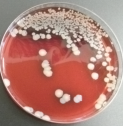
Pain free golden staph treatment cleared for use in remote communities
A northern Australian research team has provided reassuring support for the continued use of an oral treatment option for patients with skin infections, finding that there has been inaccurate reporting of resistance to the recommended antibiotic.
-
‘Golden staph’ three species, not one
'Stories of Australian Science' magazine
-

Researchers discover a new silver species of Staphylococcus
Scientists from a pioneering Northern Territory-based research project have uncovered two new species of staphylococcus. One of the two has been officially registered as Staphylococcus argenteus, or more commonly Silver Staph.
-

Infectious diseases specialist awarded $75 000 to continue fight against super-bug.
The grant will provide vital funding to develop trials in the areas of Staphylococcus aureus (golden Staph) infections, bone and joint infections and skin infections.
-

NHMRC career fellowship: Dr Josh Davis
Menzies infectious diseases specialist, Dr Josh Davis was recently awarded a Career Development Fellowship as part of the National Health and Medical Research Council’s (NHMRC) yearly multi-million dollar funding round. Josh’s fellowship...
-

NHMRC project snapshot: Dr Josh Davis
Menzies infectious diseases specialist, Dr Josh Davis was recently awarded a competitive project grant as part of the National Health and Medical Research Council’s (NHMRC) yearly multi-million dollar funding round.
-
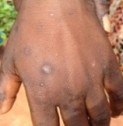
Pioneering skin sores research to improve health of children globally
A NT-based research project investigating alternative and more practical treatments for skin sores is set to benefit the millions of children worldwide who suffer from this infection.
-

2011 Fulbright Northern Territory Scholar
Menzies researcher Dr Steven Tong has been awarded a prestigious Fulbright Scholarship for his critical research into golden staph, a major cause of severe community and hospital acquired infections.


